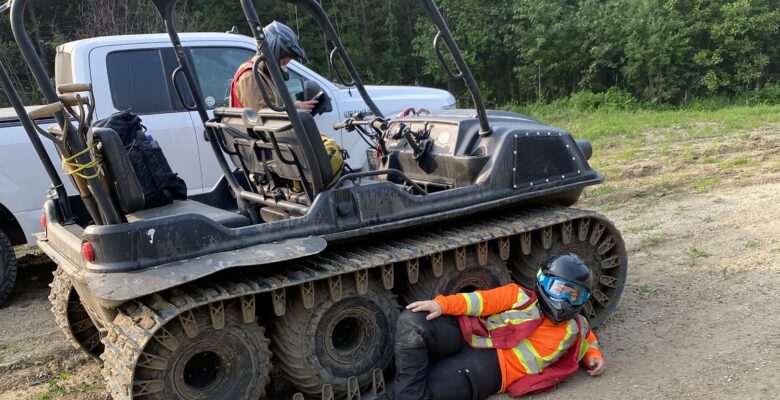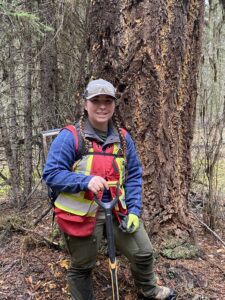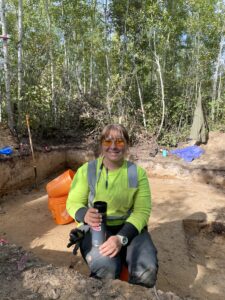Females in the Field, Field Notes, Suggestions for Students
What’s In My Backpack? Field Season Essentials

Hey there! I’m Emily Scott, an Assistant Archaeologist with Circle CRM Group. I earned my Bachelor of Science from the University of Calgary, double majoring in Archaeology and Biological Anthropology. Now in my third season of cultural resource management, I’ve learned one big lesson: what you pack can make or break your day. When you’re deep in the field and counting on what you’ve brought with you, packing smart makes all the difference.
With experience (and a few rough days), I’ve learned what’s essential. Let’s talk about what’s actually worth the weight.
Why a Backpack Wins the Day
When it comes to field gear, I’m Team Backpack all the way. Cruiser vests have their place, sure, but backpacks let you carry the extras—the stuff you don’t always think you need… until you really, really do. Plus, you can balance the weight properly, adjust the straps to save your shoulders, and throw a rain cover over everything when the weather turns nasty. (Good luck covering a cruiser vest without looking like a soggy traffic cone.)
Backpacks let you pack more, organize better, and keep your gear dry. Honestly, it’s no contest: backpacks 3, cruiser vests 0.

Packing for Anything (and Everything)
An essential item, of course, is a first aid kit. Safety isn’t just a priority—it’s the number one rule. I also stash salt, electrolytes, and iodine tablets, especially for those blistering summer heatwaves. Dehydration and muscle cramps aren’t just uncomfortable; they can seriously affect your health. No one wants that.
Food is another non-negotiable. I’m talking granola bars, trail mix, the kind of snacks that can handle months bouncing around in a field pack without falling apart. Long days in the field? You’ll want backup snacks.
Extra socks? Check. Pocket knife or multi-tool? Always. Bootlaces, bungee straps, iodine tablets? You bet. And a battery pack? Essential. When the supervisor’s tablet dies mid-survey, and there’s no place to charge it, having backup power makes all the difference. It barely weighs anything but can save your whole day.
 Organized Chaos (Minus the Chaos)
Organized Chaos (Minus the Chaos)
Packing isn’t just about stuffing things in and hoping for the best. Heavy stuff goes to the bottom of the bag to save your back. Food sits at the top where it’s easy to grab. Loose items live in their own mini bag inside the main pack. No free-floating clutter allowed. Everything gets replenished at the end of the day. Used your extra socks? A new pair goes in. Ate your last granola bar? Restock. Simple.
The Unexpected MVP: Candy
Here’s an insider secret: Candy. Yes, you heard me. Starbursts, Sour Patch Kids, gummy worms, whatever works for you. When morale tanks after an hour of trenching through rose bushes or navigating the world’s muddiest trail, tossing around some candy can work miracles. (Also: emergency blood sugar boost. Enough said.)

Preparedness = Happiness
When I pack, I think: what would ruin my day? Soaked socks, broken shoelaces, a dead tablet, no snacks. That’s why I carry what I do. I’d rather haul a little extra weight and be the hero with spare bootlaces than limp around miserably until shift’s end. If something’s going to go wrong, and let’s be honest, something always does, I’d rather be ready.
Ultimately, the goal every day isn’t just to dig a few shovel tests or document a site. It’s to make sure everyone gets back safely, maybe a little muddy, maybe a little tired, but still smiling. If my backpack full of “just in case” gear helps make that happen, then it’s 100% worth it.
Got questions about packing for the field? Curious about gear, snacks, or how many pairs of socks is the sweet spot? (Spoiler: more is always better.) Reach out. We’re always happy to swap tips, share a few stories, and help you pack like a pro.
Written by Emily Scott


